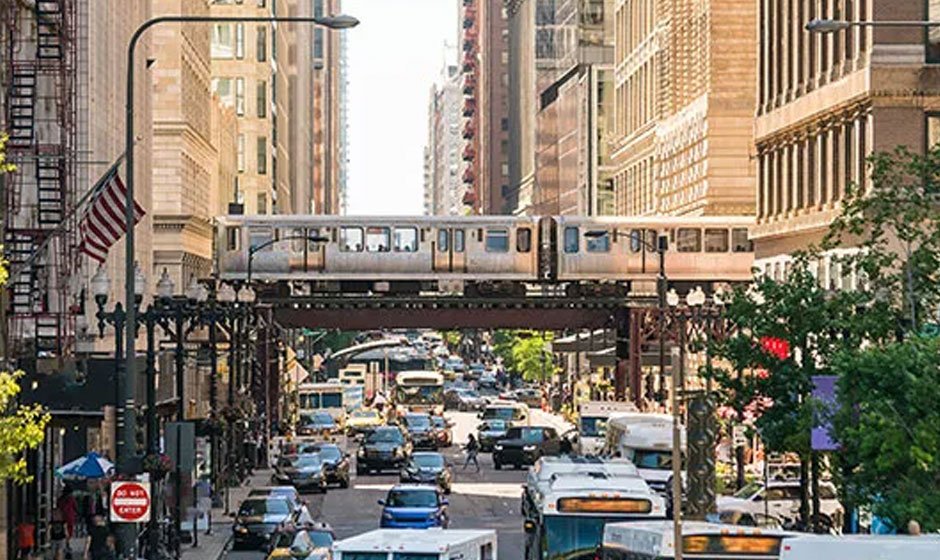Transportation is a critical aspect of modern society, enabling the movement of people, goods, and ideas. As urbanization and globalization continue to shape our world, finding effective transportation solutions is more critical than ever. From addressing traffic congestion and air pollution to enhancing accessibility and promoting sustainability, several key factors should be considered when delving into transportation solutions.
Key factors to consider:
- Smart Transportation Systems:Technology is playing an elemental role in revolutionizing transportation. Smart transportation systems leverage data, sensors, and communication technologies to optimize traffic flow, boost safety, and improve efficiency. These systems enclose real-time traffic monitoring, adaptive traffic signals, and intelligent routing algorithms that help alleviate congestion and minimize travel times.
- Public Transit:Developing efficient and accessible public transit networks is crucial in lessening the dependence on personal vehicles. Well-designed public transit systems offer a cost-effective and environmentally friendly alternative to driving. High-speed trains, buses, subways, and light rail systems assure options that can cater to a wide range of commuter needs.
- Infrastructure Investment:Adequate infrastructure is the backbone of an efficient transportation system. Investment in roads, bridges, ports, airports, and rail networks is elemental to ensuring the smooth movement of goods and people. Sustainable infrastructure development also considers durability and safety adaptability to future needs.
- Urban Planning and Zoning:Well-planned urban areas can alleviate many transportation challenges. Mixed-use developments incorporating residential, commercial, and recreational spaces nearby can reduce the need for long commutes. Walkable neighborhoods with ample green spaces and access to public transportation encourage a more sustainable lifestyle.
- Autonomous Vehicles:The emergence of autonomous self-driving cars holds considerable promise for transforming transportation. Although still in its early phases, this technology has the potential to yield safer roadways, diminished traffic congestion, and an amplified sense of inclusiveness for individuals who are unable to drive, such as older people or those living with disabilities, every day.
- Last-Mile Solutions:The “last mile” refers to the final leg of a person’s journey from a transportation hub to their destination. Innovative solutions like electric scooters, e-bikes, and micro-mobility options address this challenge by assuring suitable and eco-friendly ways to cover short distances.
- Behavioral Changes:Encouraging shifts in behavior is elemental for sustainable transportation solutions. Public awareness campaigns, incentives for carpooling or using public transit, and congestion pricing aim to influence choices and reduce the overall impact of transportation on the environment.
How do you find a reliable provider for transportation solutions?
Finding a reliable provider for transportation solutions is elemental for businesses and organizations seeking to boost their logistical efficiency, reduce costs, and contribute to sustainable practices. Whether you’re looking for fleet management, supply chain optimization, or advanced technology solutions, here are some critical steps to aid you in identifying a trustworthy partner:
- Define Your Needs:Before searching for a transportation solutions provider, clearly define your specific needs and objectives. Are you looking to improve delivery times, reduce fuel costs, or enhance supply chain visibility? Understanding your requirements will help narrow your search and evaluate potential providers more effectively.
- Research and Referrals:Conduct thorough research online to identify transportation solution providers in your industry. Look for companies with a strong track record, positive customer reviews, and case studies showcasing successful implementations. CCR Fleet Services is one to consider. Additionally, there are sleek referrals from colleagues, partners, or industry associations. Recommendations from trusted sources can provide valuable insights.
- Technological Expertise:In today’s digital age, technology plays an elemental role in transportation solutions. Look for providers that offer cutting-edge technical solutions such as real-time tracking, data analytics, route optimization, and integration with other systems. Their technical capabilities will determine how effectively they can address your transportation challenges.
- Transparency:Transparency is elemental for building trust in any business relationship. Choose an open provider about its processes, pricing, and performance metrics. They should ensure clear communication and keep you informed about the progress and outcomes of their solutions.
What benefits do transportation solutions have?
Transportation solutions present many benefits that encompass a range of industries and sectors. These solutions are meticulously crafted to enhance efficiency, lower costs, boost safety, and make meaningful contributions to sustainability. Whether they are implemented in freight management, fleet operations, or urban mobility, transportation solutions possess the potential for extensive positive effects. Here are some primary advantages of transportation solutions:
- Improved Supply Chain Management:Transportation solutions are pivotal in supply chain optimization. Accurate demand forecasting, inventory management, and timely deliveries ensure products are available when and where needed, reducing stockouts and excess inventory costs.
- Real-Time Visibility:Modern Transportation solutions provide real-time tracking and visibility into shipments and vehicles. This visibility allows for better decision-making, improved customer communication, and timely intervention in case of unforeseen events or disruptions.
- Safety Enhancements:Cutting-edge transportation solutions frequently incorporate telematics and driver monitoring systems, which are elemental in enhancing safety practices. By closely monitoring driver behavior and assuring adherence to safety regulations, these technologies result in fewer accidents and incidents, ultimately elevating road safety for everyone involved.

